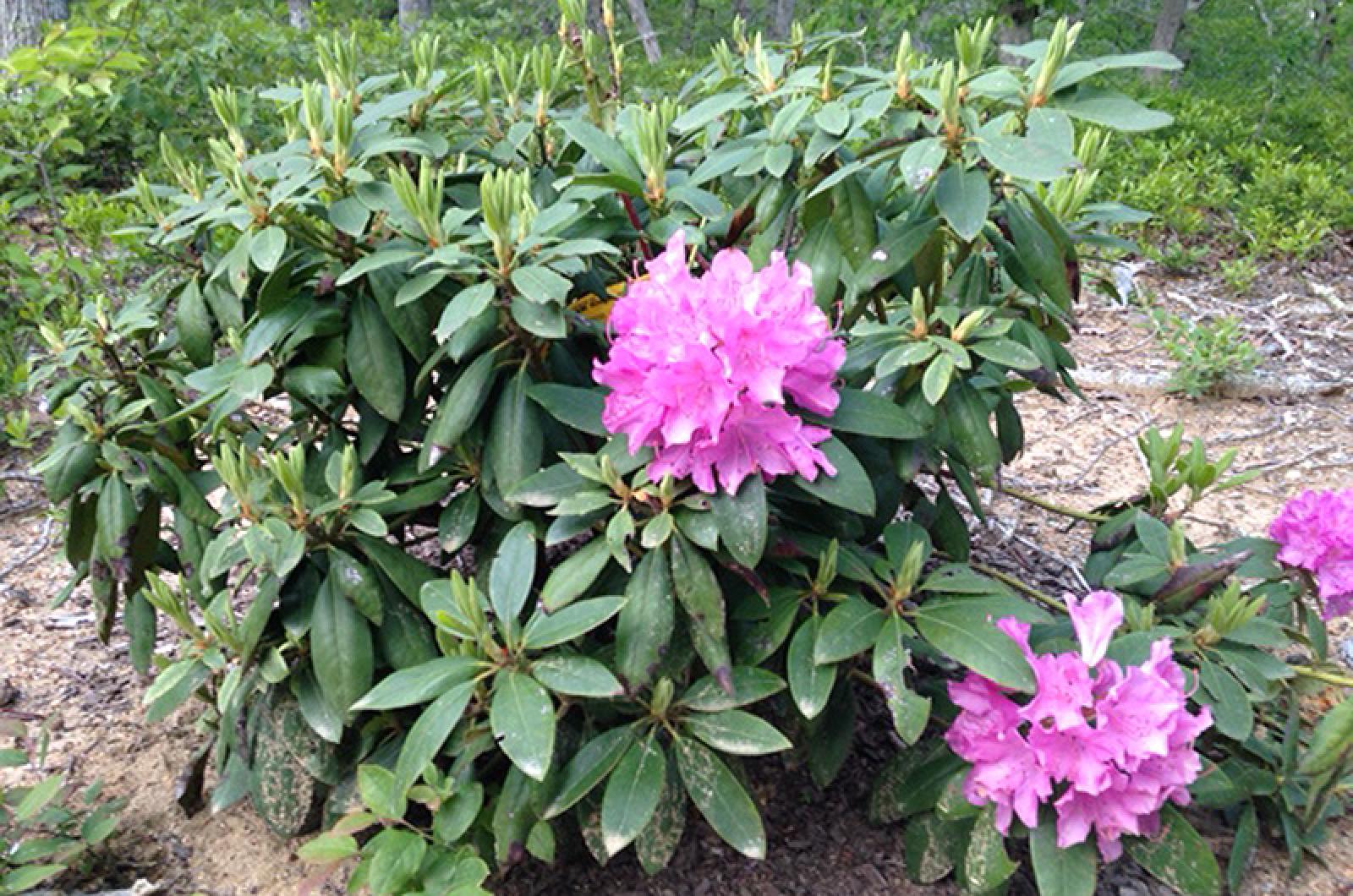We all want to leave a legacy. While money and property are traditional ones, there are many other ways to leave your mark. On my property, a legacy lives. The living legacy is a small rhododendron, planted by my father last year. Not to worry, my dad is still alive and well, and thanks to his care and my fear of harming his heirloom, so is his shrub.
My father, Peter, has set ideas on yard care and maintenance and my post-construction landscape did not sit well with his suburban aesthetic. During a visit last year, I arrived home to find him with a shovel in his hand, sweat on his brow, and a rhododendron planted just beyond my deck. I was both surprised and confused to see this plant in its place, front and center. My yard is hardly yard-like; rather, the property has a house surrounded by Vineyard-typical woodlands of oak and huckleberry. Rhododendrons did not have a place in my botanical vision, though I kept a smile on my face as he proudly shared his handiwork and my new landscape feature.
He explained its many benefits. It will shield your house from the road, he noted, which is correct since this species, Rhododendron maximum, can grow to 15 feet high and 15 feet wide, and in extreme cases even reach 40 feet!
Nor did it turn out that he brought in a non-native species. Though my plant is a cultivar, it has its roots in a species native to North America and even present in New England. The American rhododendron, also called rosebay rhododendron and great laurel, is common throughout Appalachia, is the state flower of West Virginia, and is present in the Commonwealth.
It shouldn’t be surprising that this plant is considered an old standby with its pinkish-purple flowers and long-lived nature. Its 40-plus-year lifespan assures that it will be around for a long time. That is likely why Peter chose this plant, hoping that it will be a pleasant reminder of him for many years to come.
It really is growing on me, that rhododendron, though I am glad that it wasn’t its sister species, azalea, that I came home to. Though all azaleas are rhododendrons, rhododendrons are not azaleas. Rhododendron is a genus of over 1,000 species and includes that other popular yard plant.
One doesn’t need to be a Rhodes scholar to distinguish the rhododendron species from the azalea. The easiest way to tell them apart is when they are flowering. Look at the stamens (the thin stems sticking out of the flowers) — azaleas have five, while rhododendrons have 10.
With its flowering this year, my affection for Peter’s plant grows stronger. He must have been in cahoots with Ralph Waldo Emerson, who penned an entire poem to its allure. In the Rhodora, Emerson advises:
“if the sages ask thee why
This charm is wasted on the earth and sky,
Tell them, dear, that, if eyes were made for seeing,
Then beauty is its own excuse for Being.”
With that poetic grace and familial association, I will never again question the rhododendron’s value or belonging in my space. I have become, like my dad, a Rhode warrior in my own right.
Suzan Bellincampi is director of the Felix Neck Wildlife Sanctuary in Edgartown, and author of Martha’s Vineyard: A Field Guide to Island Nature.




Comments
Comment policy »